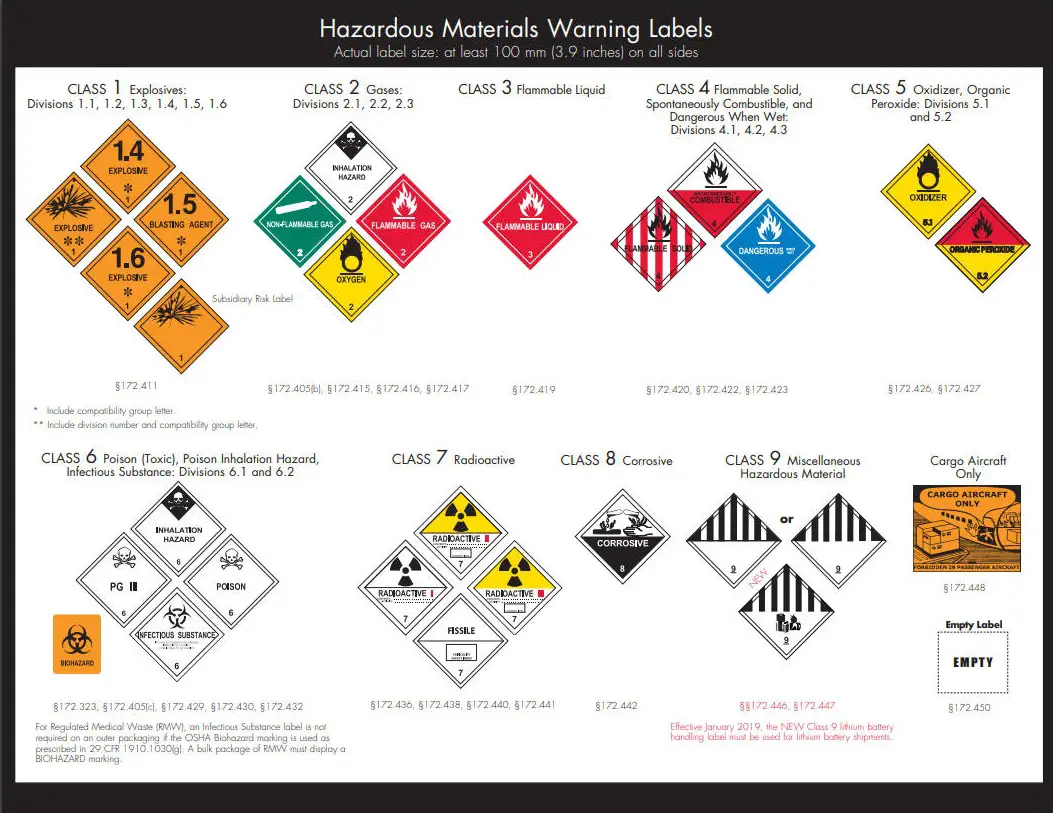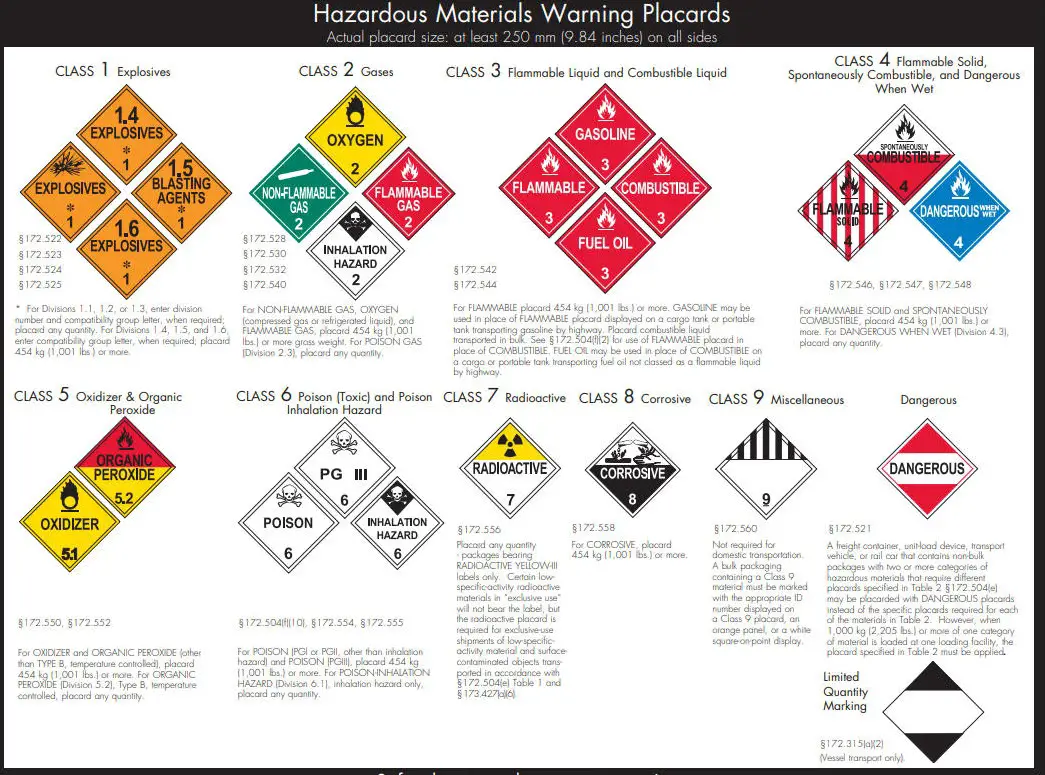These pages offer guidance on DOT transportation regulations regarding hazardous materials. Keep in mind that the definition of "hazardous material" under DOT can be different from the EPA's definitions of "hazardous waste" under RCRA, or "hazardous substance" under CERCLA/SARA, and OSHA definitions.
For the past decade, government and hazardous materials industry officials have used an estimate of more than 500,000 daily shipments to characterize hazmat traffic in the U.S. and, implicitly, a level of risk to the transport community and general public. Because of growth in the hazmat sector, as well as in the overall U.S. economy, along with changes in national and global distribution practices, research has been undertaken by the US DOT to evaluate and update current hazmat traffic levels. Hazardous materials traffic levels in the U.S. now exceed 800,000 shipments per day and result in the transport of more than 3.1 billion tons of hazardous materials annually.
There is quite a variety of often complex regulations to manage these shipments. Most of these regulations appear in the Code of Federal Regulations, Title 49 (49 CFR). If you are about to ship a package that you suspect may contain a compound or article that could be toxic, flammable, shock-sensitive, cause fires to start, release gas, be under pressure, be corrosive, etc,; then you'd better read our How to Comply pages for detailed information on hazardous materials regulations, and the requirements for packaging, labeling and shipping hazardous materials (also called hazmats).


Ways to save money AND help the environment:
Eat healthier AND save money: Instant Pot Duo Crisp 11-in-1 Air Fryer and Electric Pressure Cooker Combo with Multicooker Lids that Fries, Steams, Slow Cooks, Sautés, Dehydrates
Save water AND money with this showerhead adapter, it lets the water flow until the water is hot, then shuts off water flow until you restart it, ShowerStart TSV Hot Water Standby Adapter
Protect your health with these:
Mattress Dust mite-Bedbug protector, 100% Waterproof, Hypoallergenic, Zippered
Handheld Allergen Vacuum Cleaner with UV Sanitizing and Heating for Allergies and Pet, Kills Mite, Virus, Molds, True HEPA with Powerful Suction removes Hair, Dander, Pollen, Dust,
Immune Support Supplement with Quercetin, Vitamin C, Zinc, Vitamin D3
GermGuardian Air Purifier with UV-C Light and HEPA 13 Filter, Removes 99.97% of Pollutants
5 Stage Air Purifier, Features Ultraviolet Light (UVC), H13 True Hepa, Carbon, PCO, Smart Wifi, Auto Mode, Quiet, Removes 99.97% of Particles, Smoke, Mold, Pet Dander, Dust, Odors
Interesting Reads:
THE PREPPER'S CANNING & PRESERVING BIBLE: [13 in 1] Your Path to Food Self-Sufficiency. Canning, Dehydrating, Fermenting, Pickling & More, Plus The Food Preservation Calendar for a Sustainable Pantry
The Backyard Homestead: Produce all the food you need on just a quarter acre! Paperback
The Citizens' Guide to Geologic Hazards: A Guide to Understanding Geologic Hazards Including Asbestos, Radon, Swelling Soils, Earthquakes, Volcanoes
The Uninhabitable Earth: Life After Warming
Book: The Sixth Extinction:
An Unnatural History Paperback